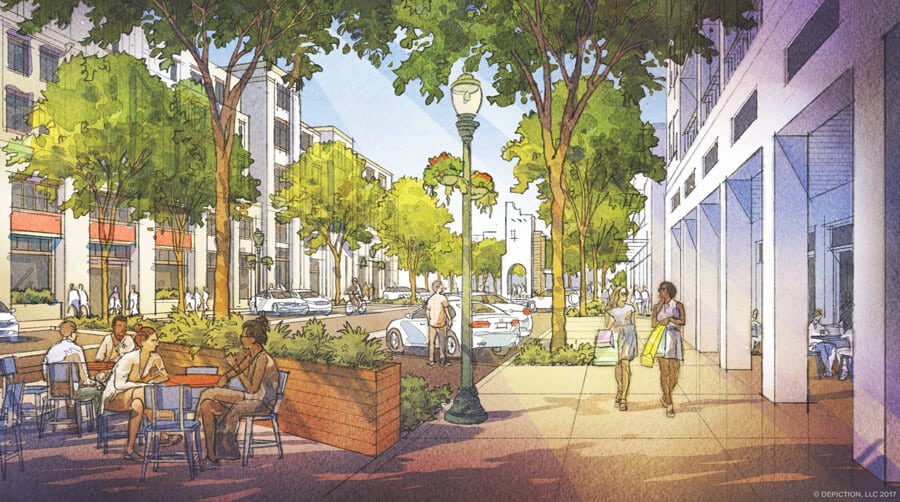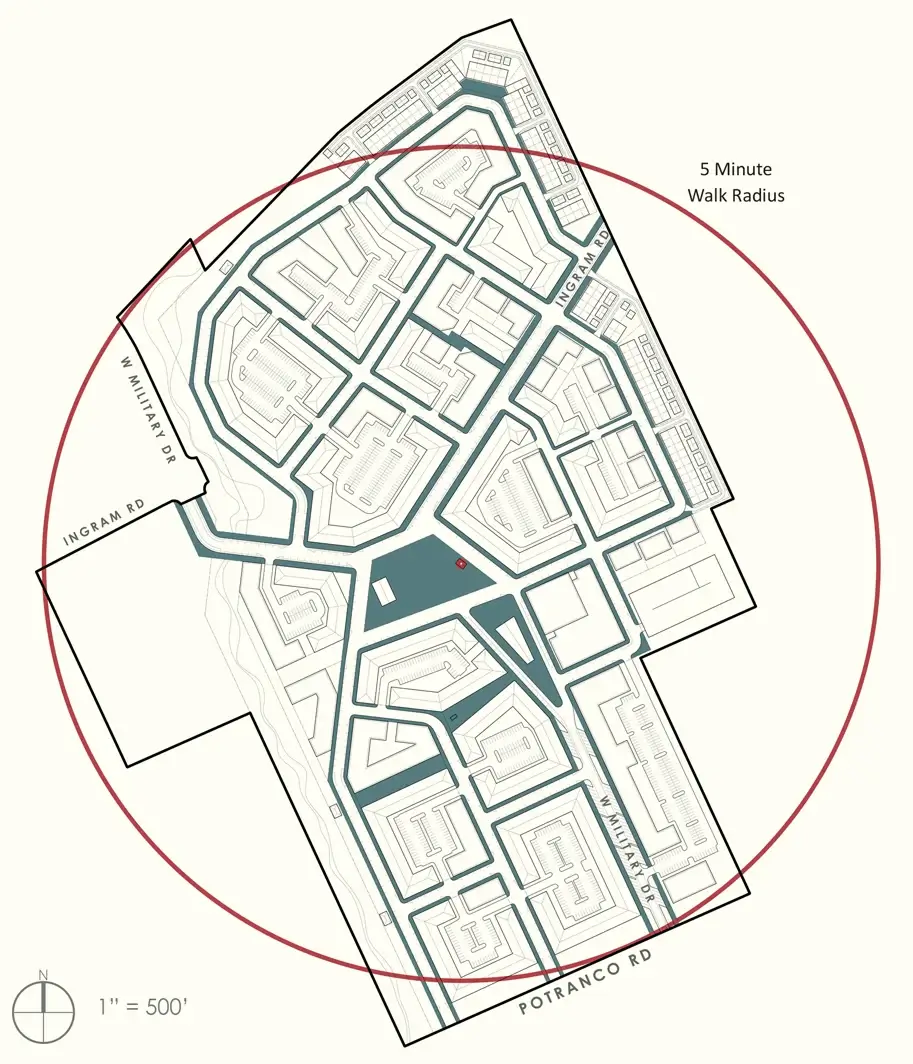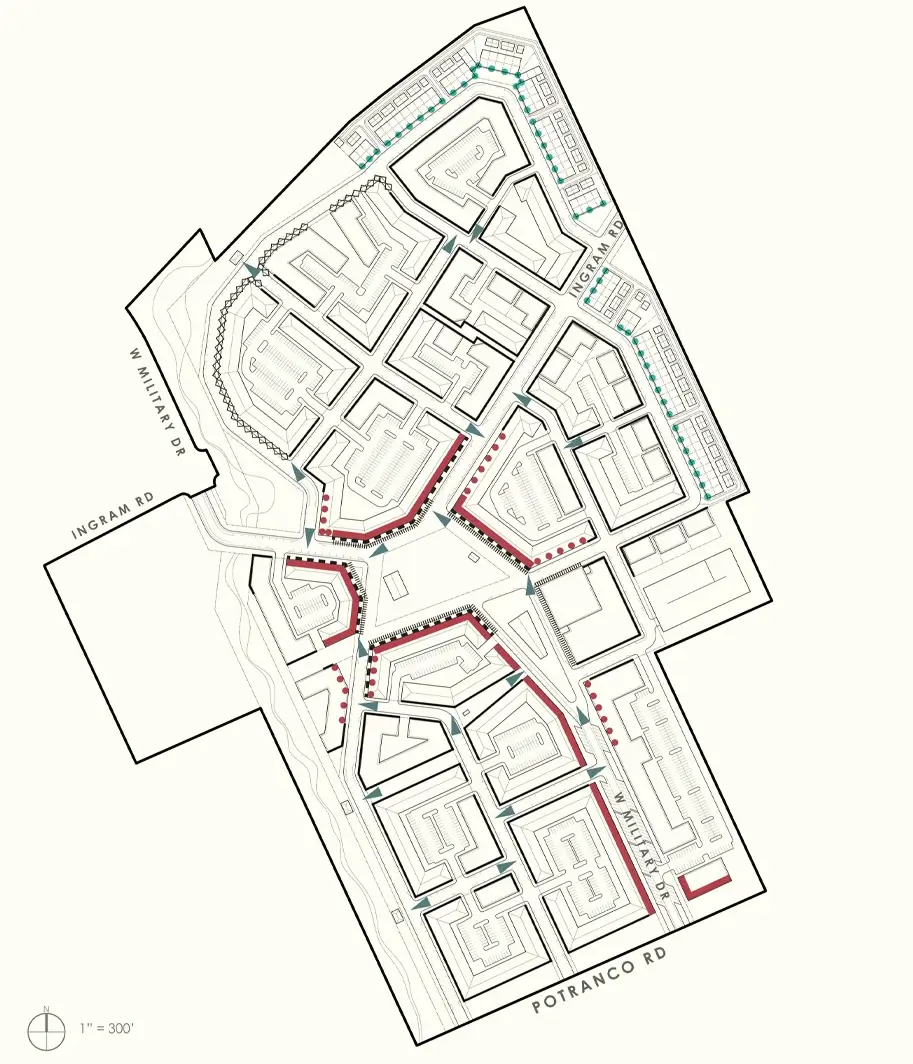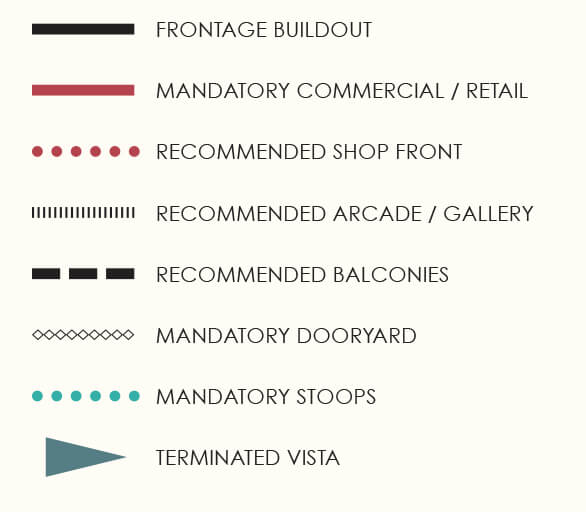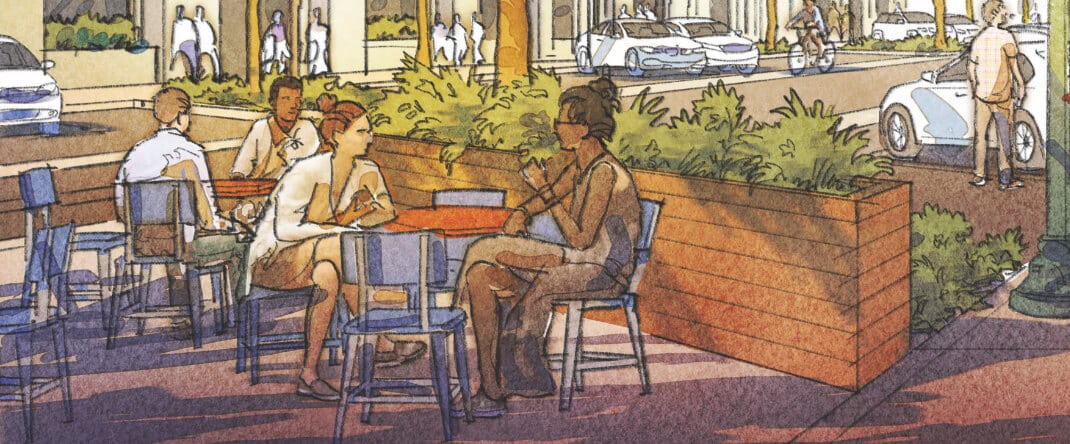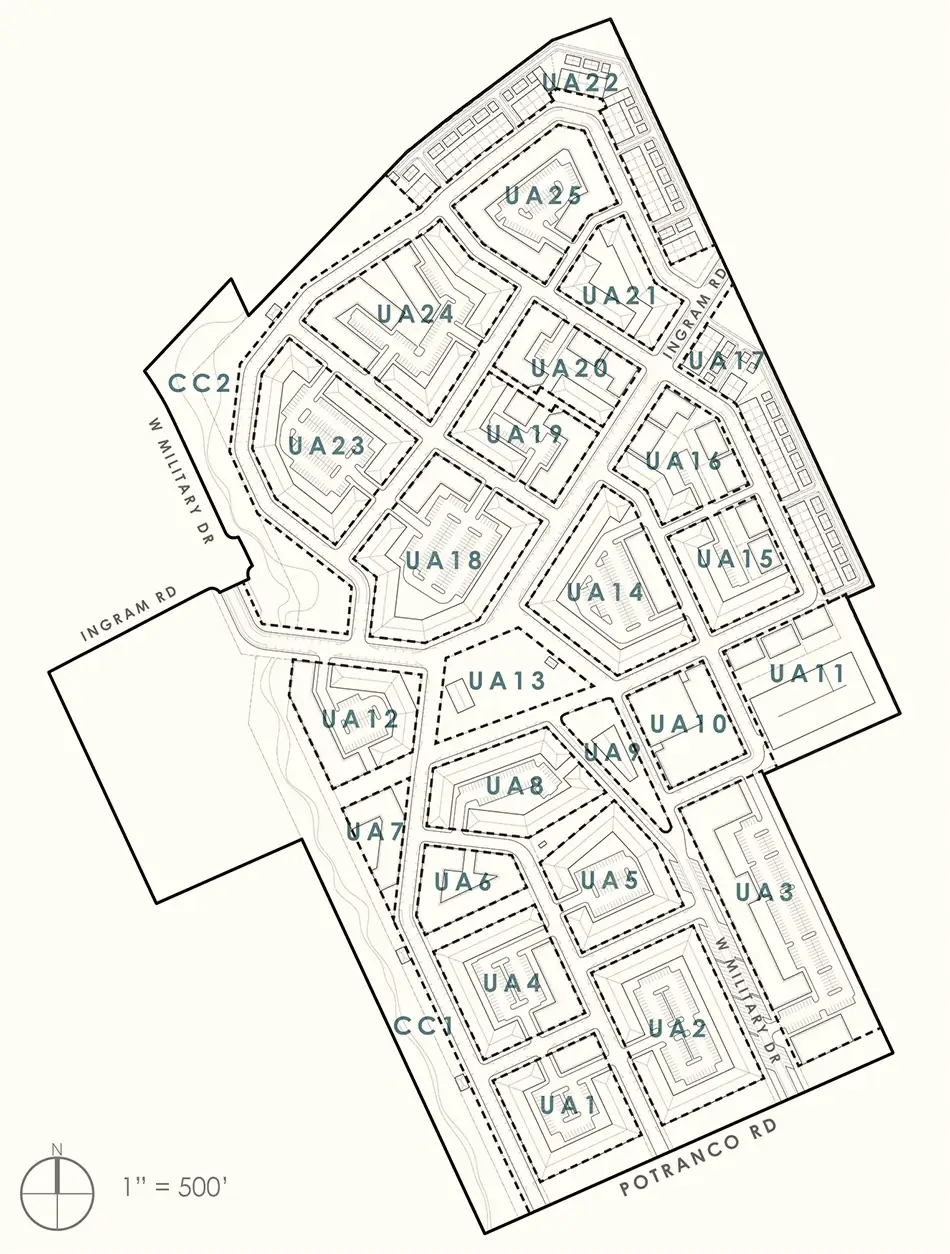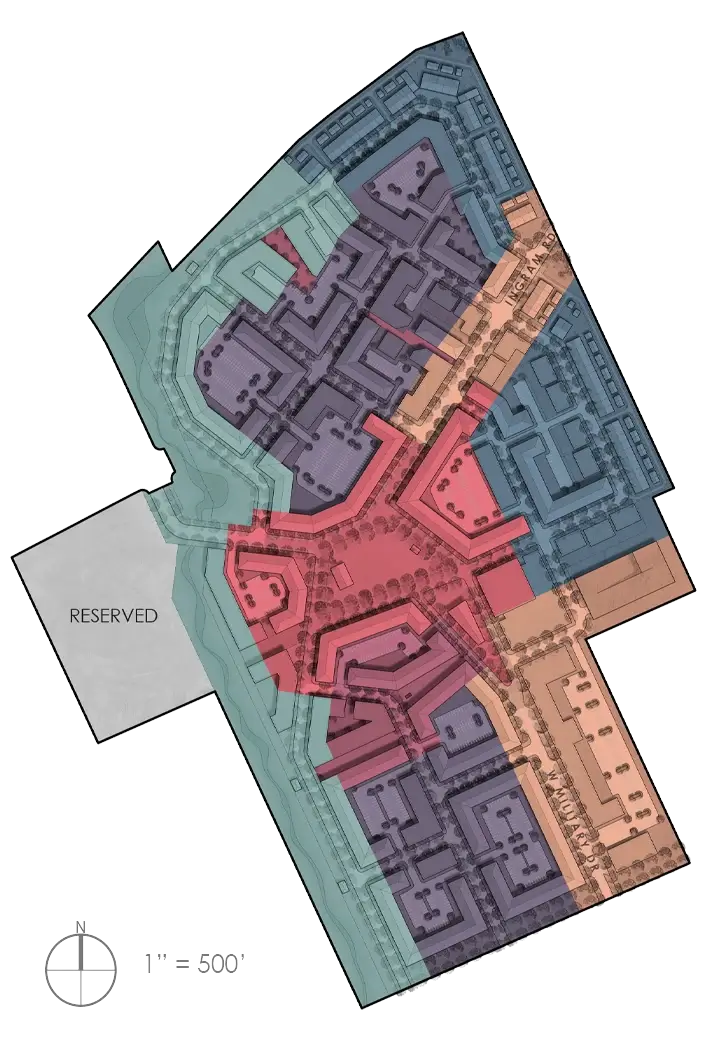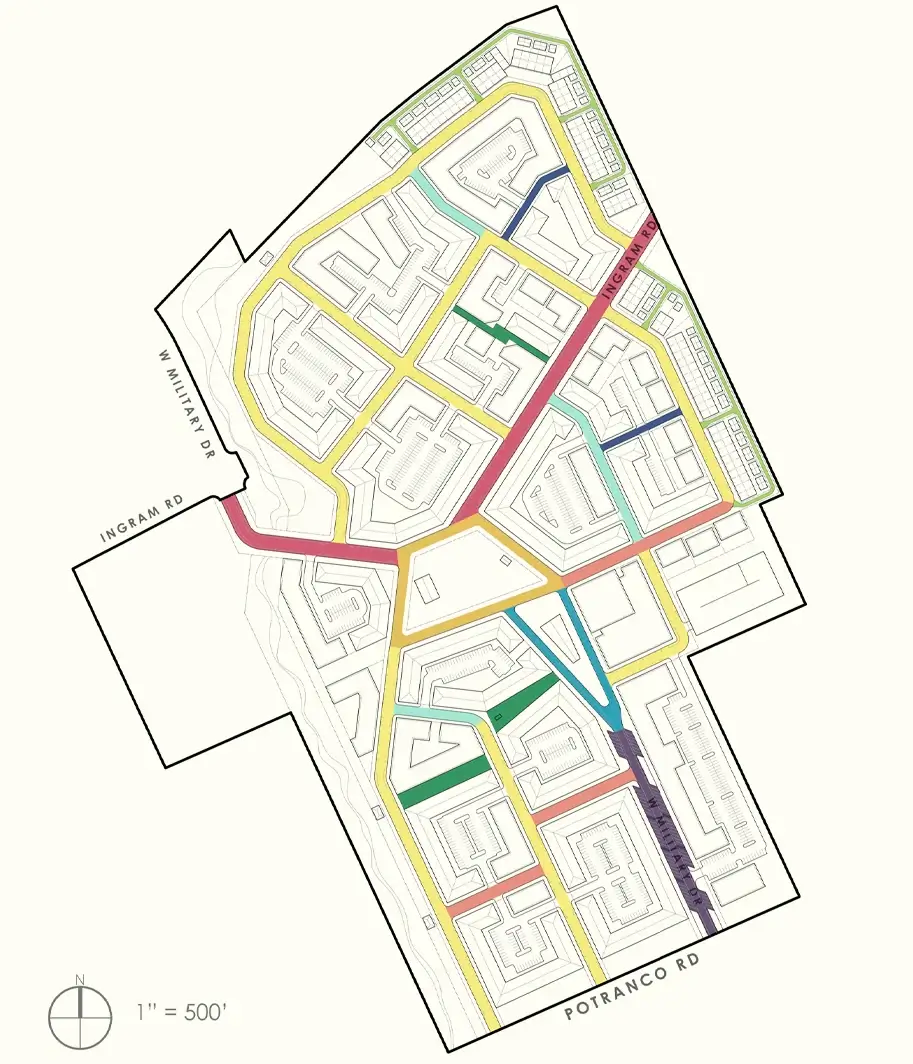Urban
Regulation
Standards
The Design Code for VICINIA is developed around the Transect, a system of land classifications described in The Lexicon of the New Urbanism, which incorporates a fine-grained network of lot distinctions. These characteristics follow the natural internal structure of an traditional neighborhood and serve to create the structure of the community of VICINIA. This structure is expressed as three urban sectors: Urban Center (T5), General Urban zone (T4) and Reserve/Preserve.
